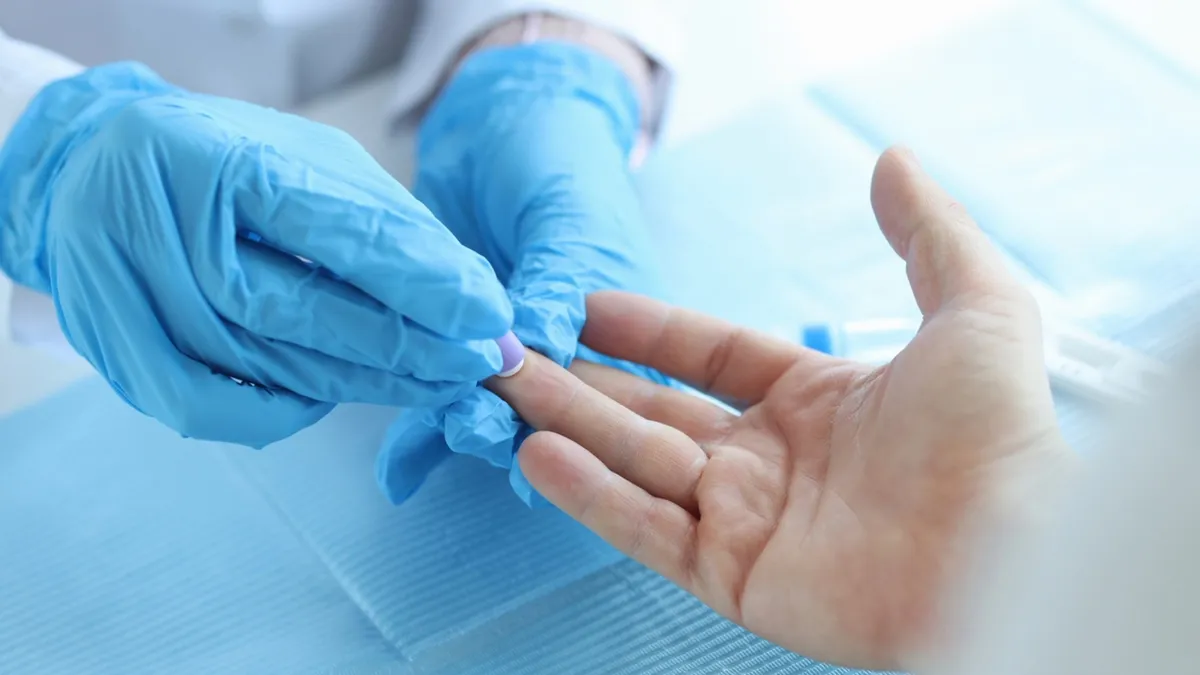Brain biometrics help identify sports concussions
SOURCE: HTTPS://WWW.SCIENCEDAILY.COM/
OCT 02, 2023
World's first finger-prick test for detection of deadly brain tumors
SOURCE: HTTPS://INTERESTINGENGINEERING.COM/
NOV 06, 2023

A team of scientists is developing the world's first finger-prick diagnostic for identifying brain tumors.
The significance of such a test lies in its non-invasive nature and the potential to detect brain tumors at an earlier stage, which can be critical for timely treatment and improved patient outcomes.
Moreover, patients can easily perform this test in the comfort of their own homes using this simple and minimally invasive procedure.
According to the Guardian, the researchers are in the process of developing a lateral flow test prototype that can identify indicators of tumor recurrence.
Nottingham Trent University collaborated with the University of Sheffield on this initiative.
The technique will be used to detect aggressive and recurring brain tumors, mainly glioblastoma (GBM) – the most dangerous kind of brain tumor.
Aggressive brain tumors like glioblastoma typically reoccur following treatment, but diagnosing this recurrence in its early stages remains difficult.
This lateral flow test will be able to detect certain chemicals in the blood that are specific to a tumor. It can provide an early warning of a tumor's potential return, allowing for quick intervention.
This test would include a simple finger prick, similar to the ones used during the COVID-19 pandemic.
“Brain tumors are managed with the best available treatments when first diagnosed, but unfortunately recurrence is a major problem and some come back very quickly and aggressively. If you have an MRI six months after treatment, by that point, a tumor could have been back for a significant amount of time, potentially,” Philippe Wilson of Nottingham Trent told the Guardian.
Trent further added: “It’s hard to imagine a medical technology so widely used and understood as the lateral flow test. This tech would provide regular, affordable disease monitoring for patients at home in an easy-to-use way. We hope the work could be applied to other types of cancer too, potentially helping to save millions of lives worldwide.”
Rather than requiring complex and painful procedures such as MRI scans or biopsies, this test aims to simplify and improve the detection process's accessibility and ease.
It has the potential to relieve the burden on healthcare systems by reducing the need for MRI scans and providing a cost-effective replacement for certain clinic consultations.
Each year, an estimated 300,000 people worldwide are diagnosed with brain cancer. While treatments have improved over the previous few decades, the danger of tumor recurrence remains a major worry. Because tumor recurrence is uncertain, early identification is difficult.
This test holds the promise of making a substantial difference by enhancing the well-being of many thousands of people around the globe and potentially extending their lives. It may provide patients affected by this illness hope for better outcomes and survival rates.
Ola Rominiyi, of the University of Sheffield, told the Guardian: “Currently, patients often have follow-up MRI scans every three to six months, but successful development of a lateral flow test to detect brain cancer could make it possible to efficiently test for recurrence every week, so that more recurrent tumors are caught early, at a more treatable stage.
Overall, a brain tumor finger-prick test may offer a potential improvement in the field of early cancer identification and therapy around the world.
LATEST NEWS
WHAT'S TRENDING


Data Science
5 Imaginative Data Science Projects That Can Make Your Portfolio Stand Out
OCT 05, 2022

SOURCE: HTTPS://WWW.SCIENCEDAILY.COM/
OCT 02, 2023
SOURCE: HTTPS://WWW.SCIENCEDAILY.COM/
SEP 20, 2023
SOURCE: HTTPS://WWW.SCIENCEDAILY.COM/
SEP 21, 2023
SOURCE: HTTPS://NATIONWORLDNEWS.COM/
SEP 05, 2023
SOURCE: HTTPS://WWW.MEDICALNEWSTODAY.COM/
AUG 30, 2023
SOURCE: HTTPS://WWW.DIABETES.CO.UK/
AUG 29, 2023
SOURCE: HTTPS://WWW.SCIENCEDAILY.COM/
AUG 22, 2023
SOURCE: HTTPS://WWW.SCIENCEDAILY.COM/
AUG 21, 2023